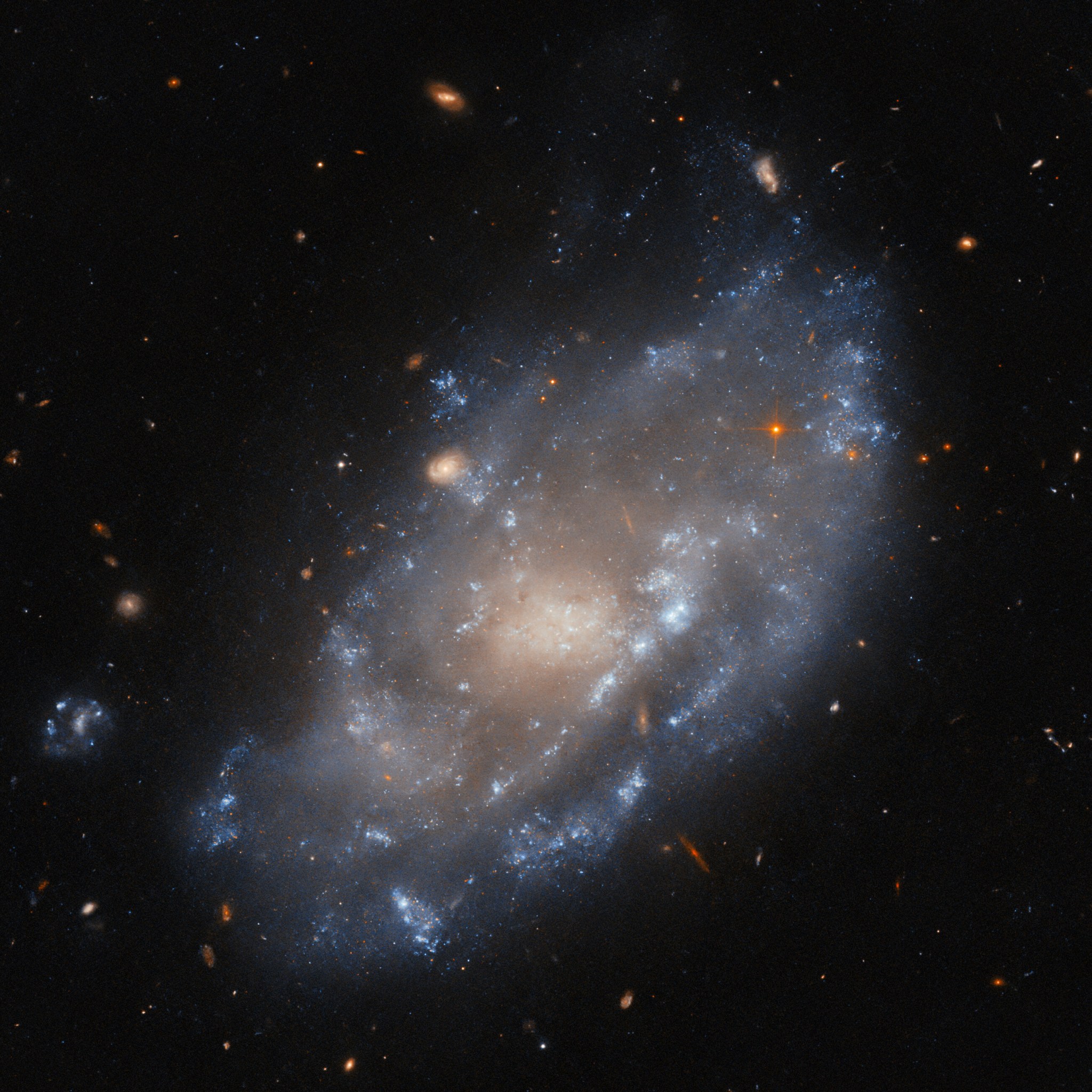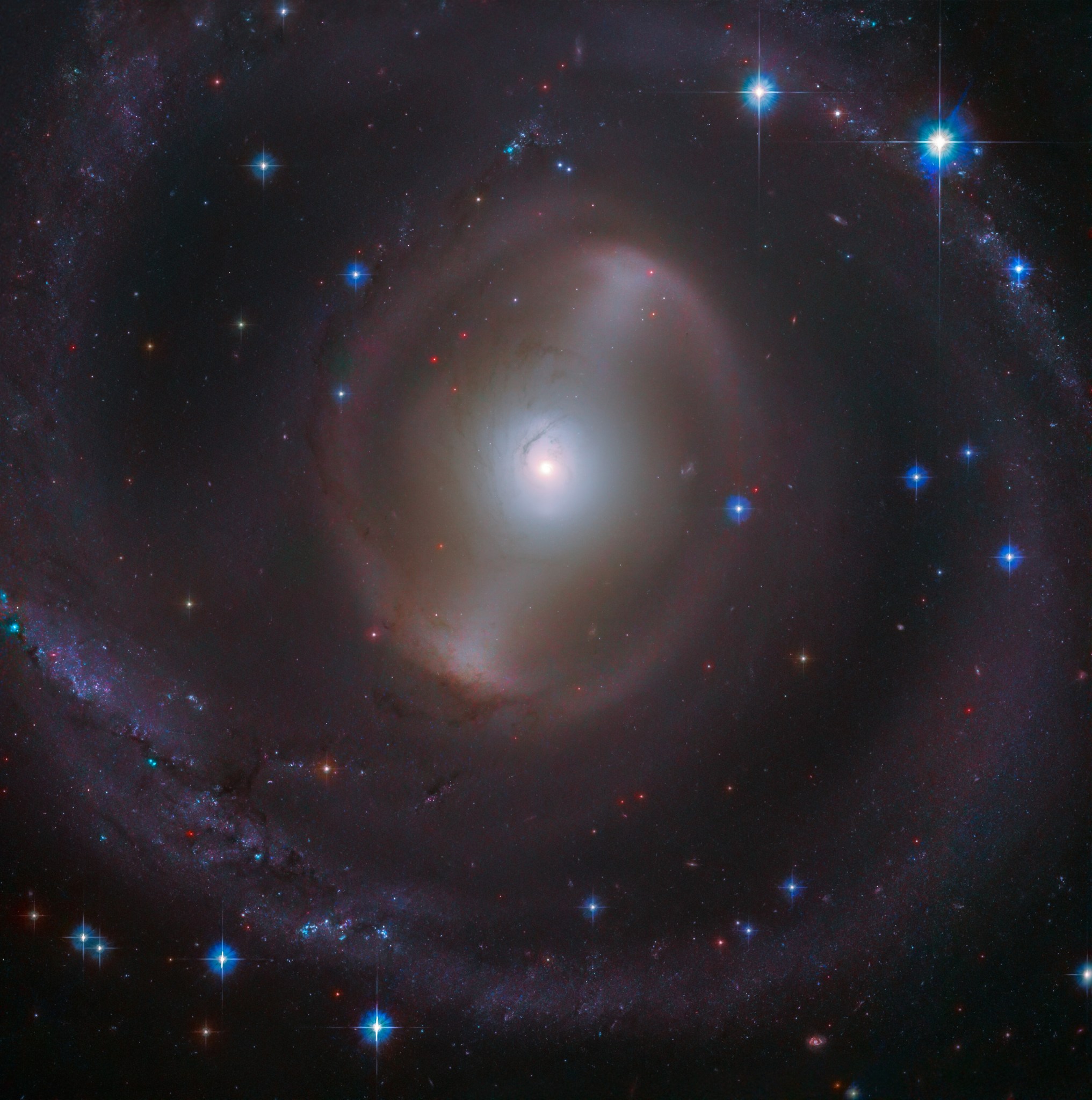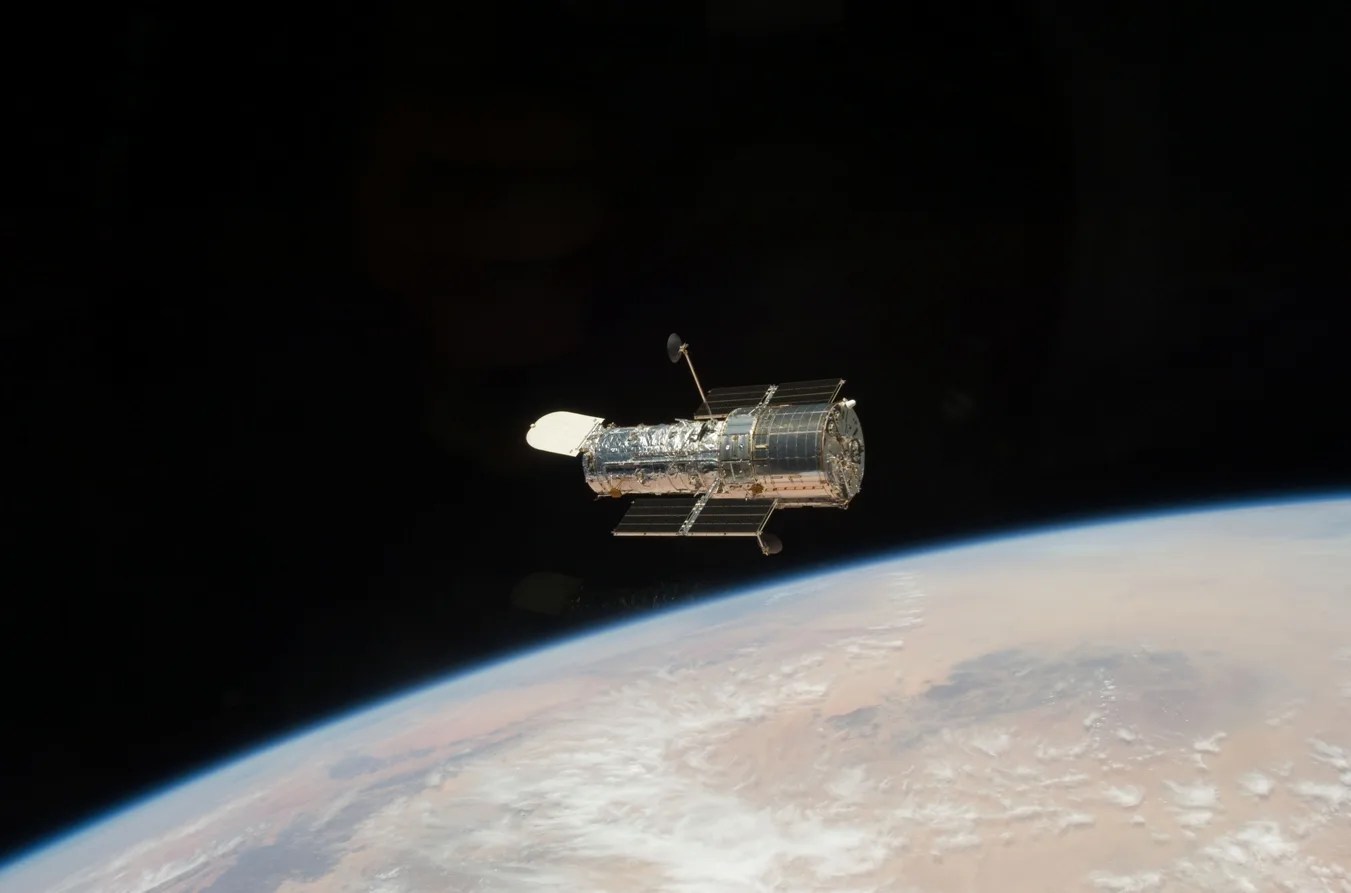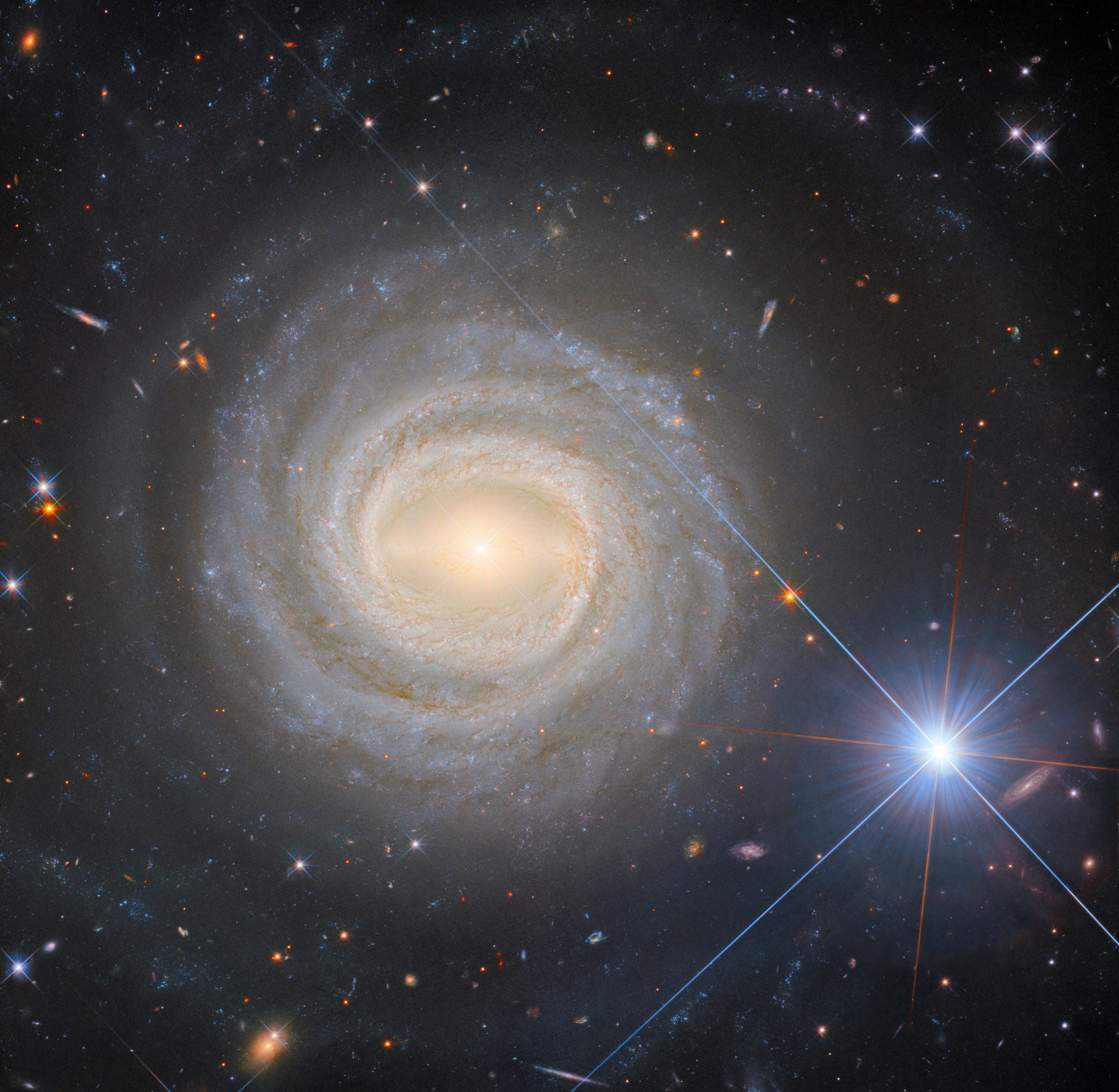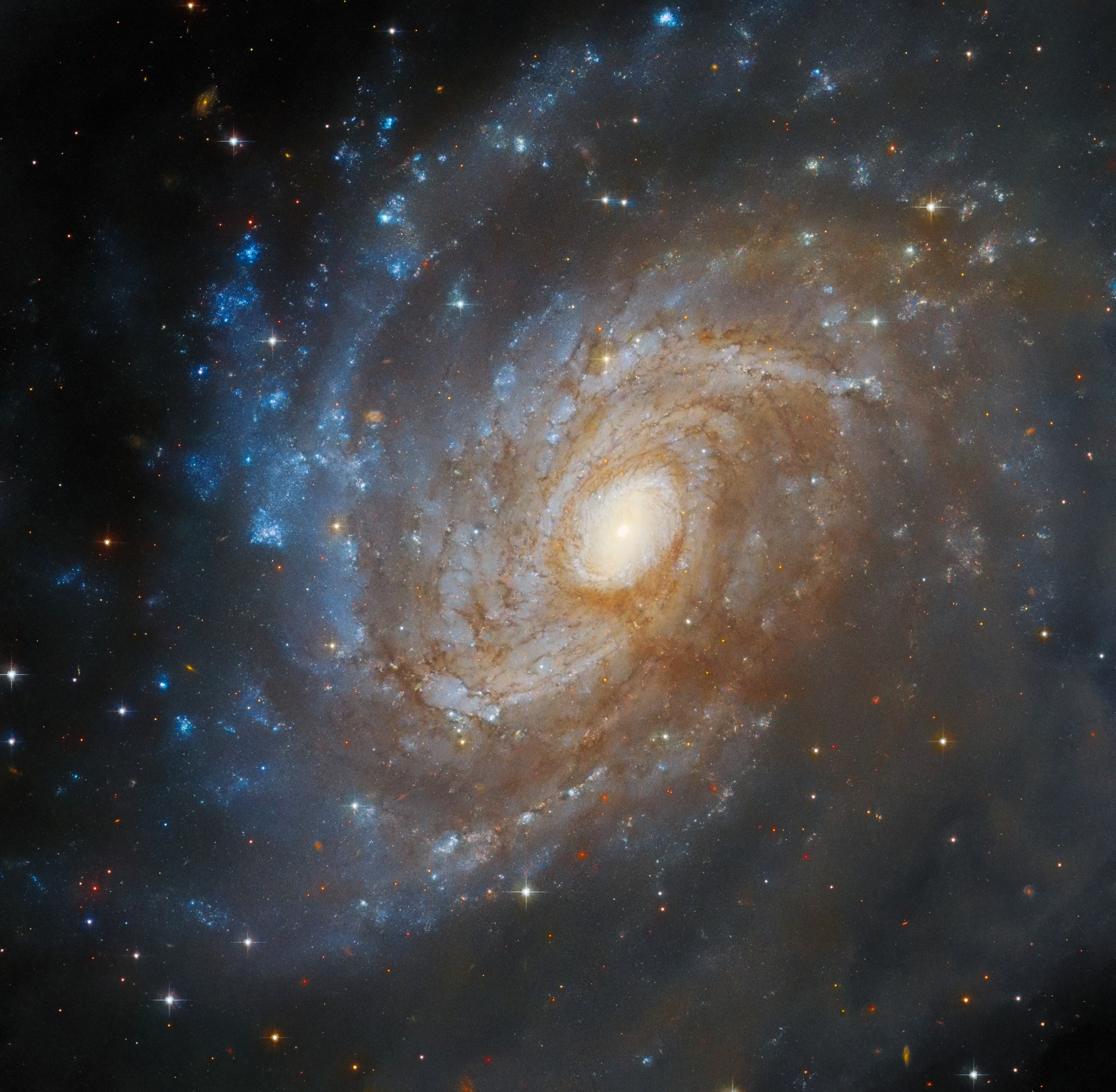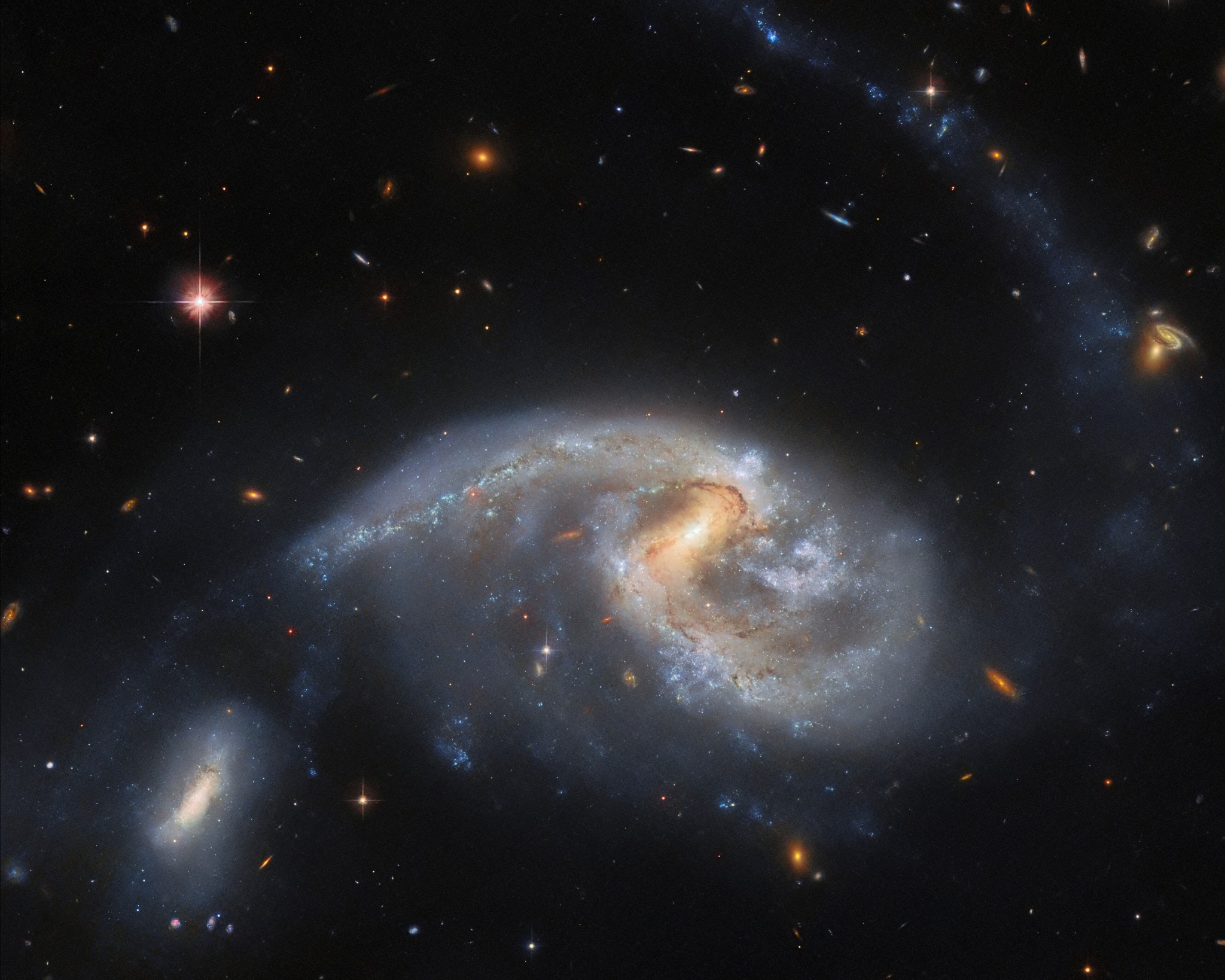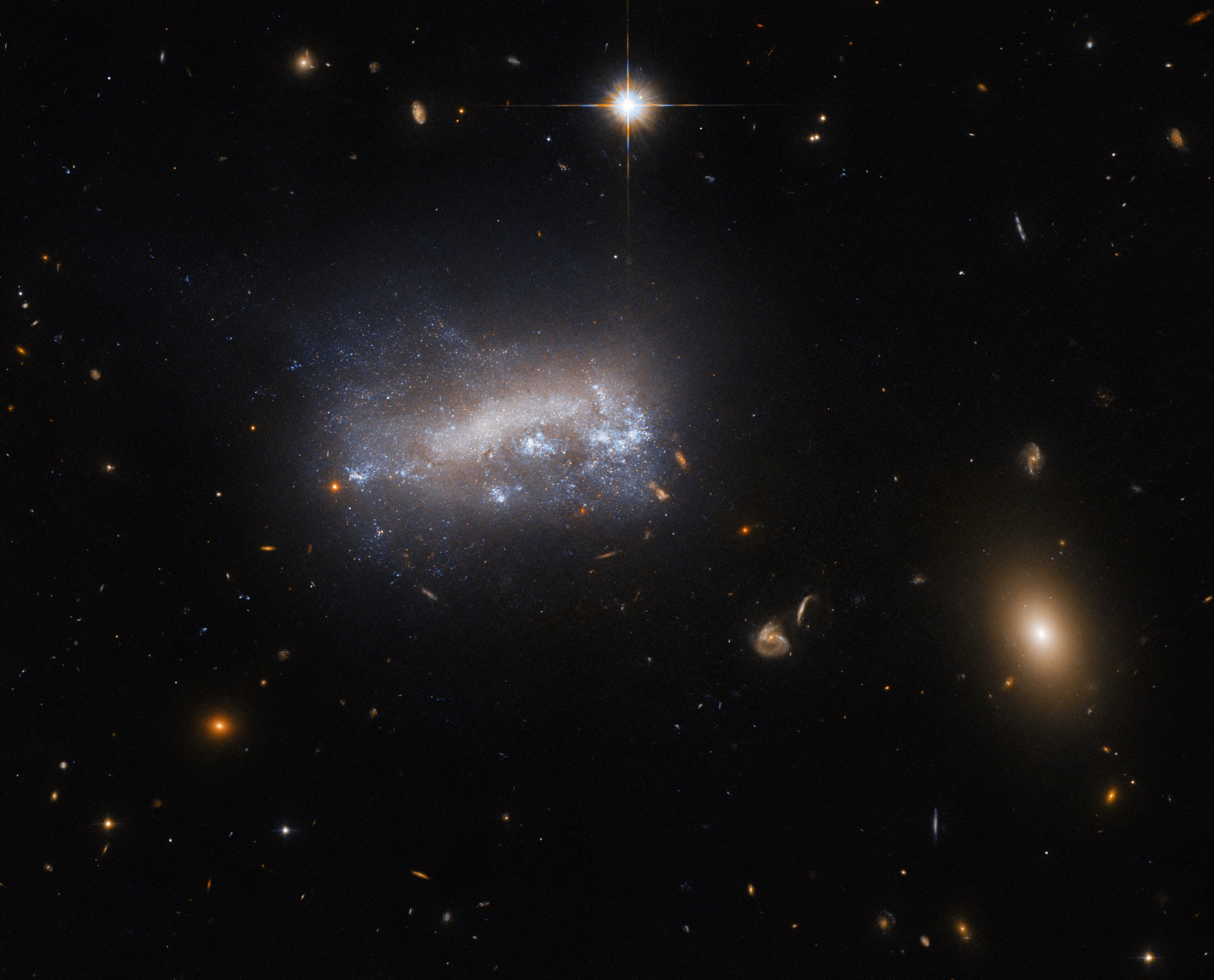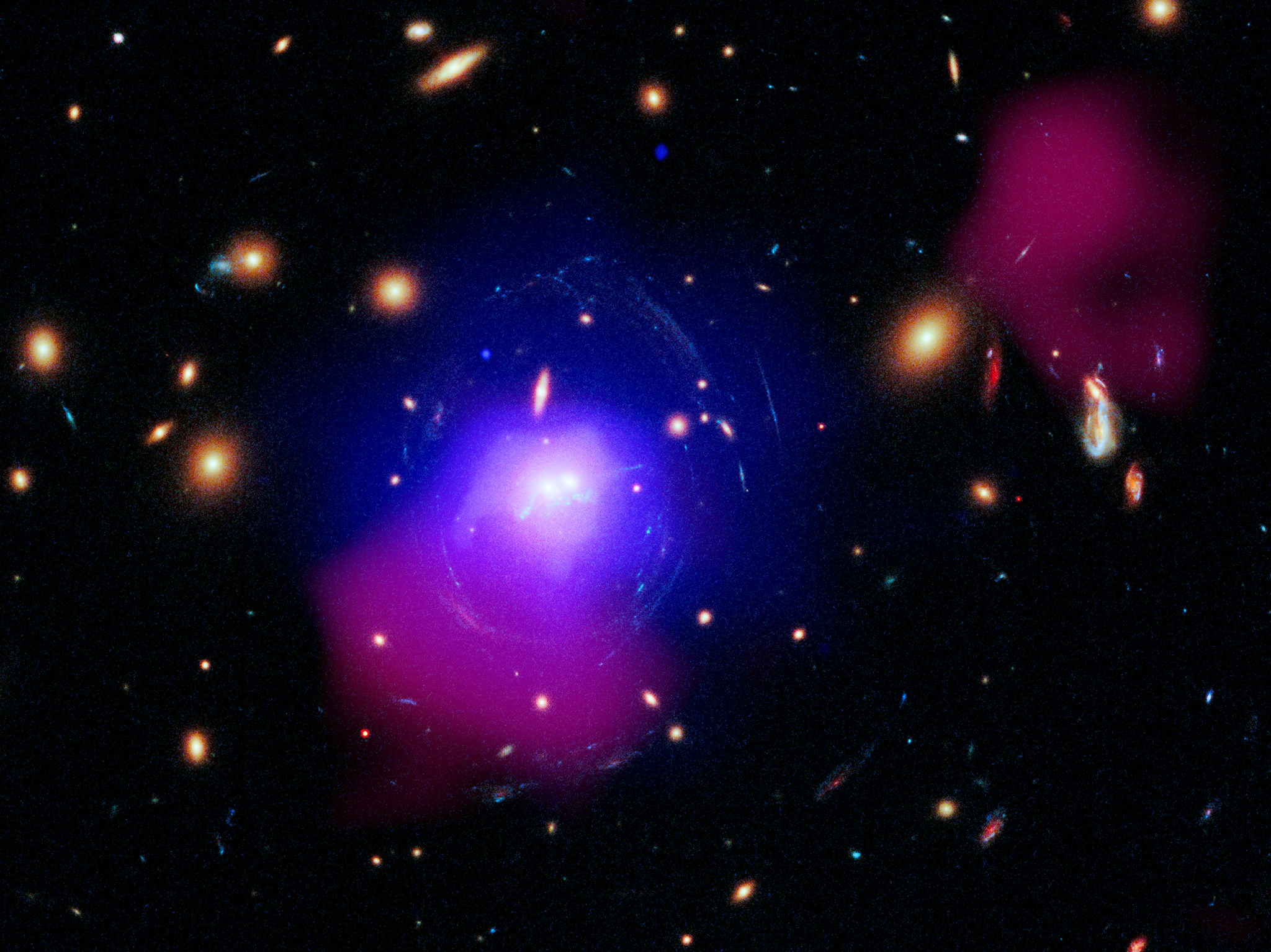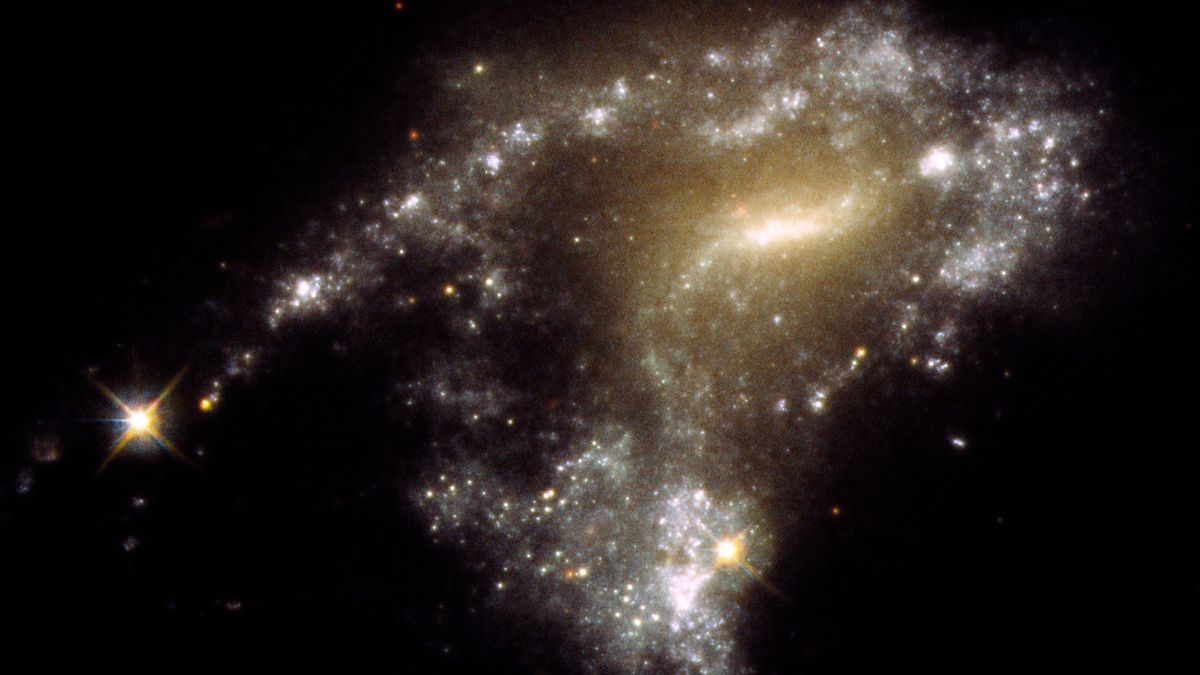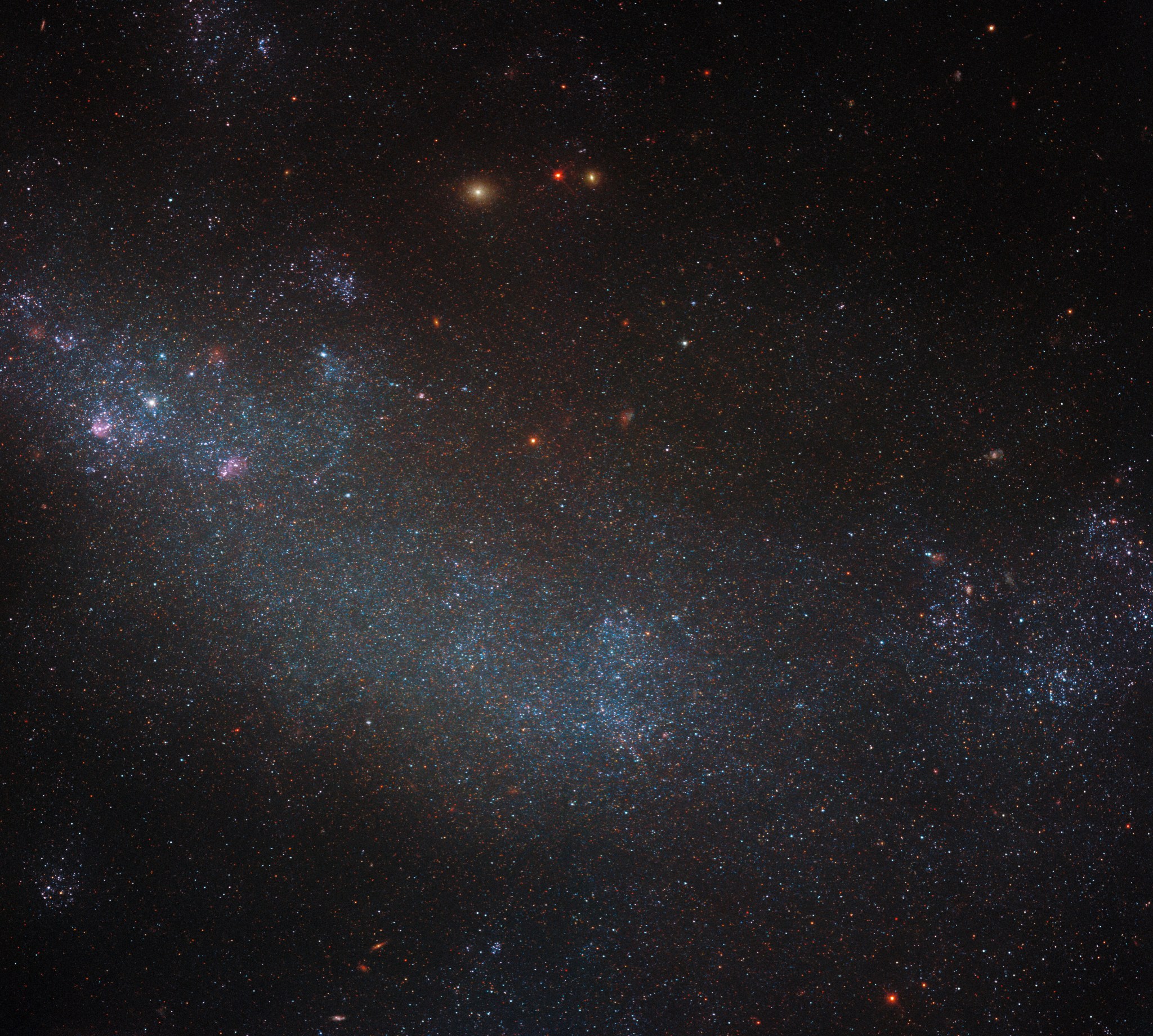2 min read Hubble Hunts Visible Light Sources of X-Rays This NASA/ESA Hubble Space Telescope image features the dwarf galaxy IC 776. ESA/Hubble & NASA, M. Sun This NASA/ESA Hubble Space Telescope image features the dwarf galaxy IC 776. This swirling collection of new and old stars is located in the constellation Virgo, in the Virgo galaxy cluster, 100 million light-years from Earth. Although IC 776 is a dwarf galaxy, it’s also classified as a SAB-type or ‘weakly barred’ spiral. This highly detailed Hubble view demonstrates that complexity. IC 776…
Read MoreTag: Hubble Space Telescope
Hubble Spots a Magnificent Barred Galaxy
This NASA/ESA Hubble Space Telescope images showcases the galaxy NGC 2217. ESA/Hubble & NASA, J. Dalcanton; Acknowledgement: Judy Schmidt (Geckzilla) The magnificent central bar of NGC 2217 (also known as AM 0619-271) shines bright in the constellation of Canis Major (The Greater Dog), in this image taken by the NASA/ESA Hubble Space Telescope. Roughly 65 million light-years from Earth, this barred spiral galaxy is a similar size to our Milky Way at 100,000 light-years across. Many stars are concentrated in its central region forming the luminous bar, surrounded by a set of tightly wound spiral arms.…
Read MoreNASA’s Hubble Pauses Science Due to Gyro Issue
2 min read NASA’s Hubble Pauses Science Due to Gyro Issue The Hubble Space Telescope as seen from the space shuttle Atlantis (STS-125) in May 2009, during the fifth and final servicing of the orbiting observatory. NASA NASA is working to resume science operations of the agency’s Hubble Space Telescope after it entered safe mode April 23 due to an ongoing gyroscope (gyro) issue. Hubble’s instruments are stable, and the telescope is in good health. The telescope automatically entered safe mode when one of its three gyroscopes gave faulty readings.…
Read MoreHubble Captures a Bright Galactic and Stellar Duo
2 min read Hubble Captures a Bright Galactic and Stellar Duo This image from the NASA/ESA Hubble Space Telescope features the barred spiral galaxy NGC 3783. ESA/Hubble & NASA, M. C. Bentz, D. J. V. Rosario This image from the NASA/ESA Hubble Space Telescope features NGC 3783, a bright barred spiral galaxy about 130 million light-years from Earth that also lends its name to the eponymous NGC 3783 galaxy group. Like galaxy clusters, galaxy groups are aggregates of gravitationally bound galaxies. Galaxy groups, however, are less massive and contain fewer members than galaxy…
Read MoreHubble Spots a Galaxy Hidden in a Dark Cloud
2 min read Hubble Spots a Galaxy Hidden in a Dark Cloud This Hubble image features the spiral galaxy IC 4633. ESA/Hubble & NASA, J. Dalcanton, Dark Energy Survey/DOE/FNAL/DECam/CTIO/NOIRLab/NSF/AURA; Acknowledgement: L. Shatz The subject of this image taken with the NASA/ESA Hubble Space Telescope is the spiral galaxy IC 4633, located 100 million light-years away from us in the constellation Apus. IC 4633 is a galaxy rich in star-forming activity and also hosts an active galactic nucleus at its core. From our point of view, the galaxy is tilted mostly…
Read MoreHubble Peers at Pair of Closely Interacting Galaxies
2 min read Hubble Peers at Pair of Closely Interacting Galaxies This NASA/ESA Hubble Space Telescope image features Arp 72. ESA/Hubble & NASA, L. Galbany, J. Dalcanton, Dark Energy Survey/DOE/FNAL/DECam/CTIO/NOIRLab/NSF/AURA This image from the NASA/ESA Hubble Space Telescope features Arp 72, a very selective galaxy group that only includes two galaxies interacting due to gravity: NGC 5996 (the large spiral galaxy) and NGC 5994 (its smaller companion, in the lower left of the image). Both galaxies lie approximately 160 million light-years from Earth, and their cores are separated from each…
Read MoreHubble Views a Galaxy Under Pressure
2 min read Hubble Views a Galaxy Under Pressure This NASA/ESA Hubble Space Telescope image shows dwarf galaxy, LEDA 42160. ESA/Hubble & NASA, M. Sun This NASA/ESA Hubble Space Telescope image shows LEDA 42160, a galaxy about 52 million light-years from Earth in the constellation Virgo. The dwarf galaxy is one of many forcing its way through the comparatively dense gas in the massive Virgo cluster of galaxies. The pressure exerted by this intergalactic gas, known as ram pressure, has dramatic effects on star formation in LEDA 42160. The gas…
Read MoreStellar Beads on a String
Galaxy cluster SDSS J1531+3414 X-ray: NASA/CXC/SAO/O. Omoruyi et al.; Optical: NASA/ESA/STScI/G. Tremblay et al.; Radio: ASTRON/LOFAR; Image Processing: NASA/CXC/SAO/N. Wolk Astronomers have discovered one of the most powerful eruptions from a black hole ever recorded in the system known as SDSS J1531+3414 (SDSS J1531 for short). As explained in our press release, this mega-explosion billions of years ago may help explain the formation of a striking pattern of star clusters around two massive galaxies, resembling “beads on a string.” SDSS J1531 is a massive galaxy cluster containing hundreds of individual galaxies and huge reservoirs of hot gas and dark…
Read MoreHubble Space Telescope tells a starry ‘tail’ of 12 mingling galaxies
The Hubble Space Telescope has stepped on the tails of 12 interacting galaxies and found them to be studded with the shining diamonds of young star clusters —scientists compare the phenomena to cosmic “strings of pearls.” When spiral galaxies interact, either through direct collision or close encounter, their spiral arms unravel. The gravitational force that a galaxy wields is vast, so when two galaxies become close, the gravitational tides that are raised tug on those spiral arms, pulling them out to form long “tails” that can stretch for many tens…
Read MoreHubble Spots a Galaxy Shrouded by Stars
2 min read Hubble Spots a Galaxy Shrouded by Stars This Hubble image shows irregular galaxy, ESO 245-5, located some of 15 million light-years from Earth. ESA/Hubble & NASA, M. Messa This NASA/ESA Hubble Space Telescope image shows a densely packed field of stars laid upon a background of dust, gas, and light from more distant celestial objects. There are so many stars in this image’s field of view that it may be a little tricky to discern that you are in fact looking at a galaxy. Known as ESO…
Read More